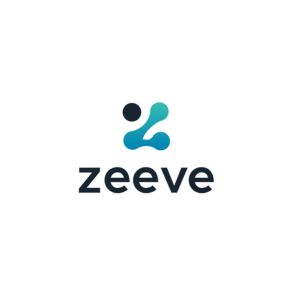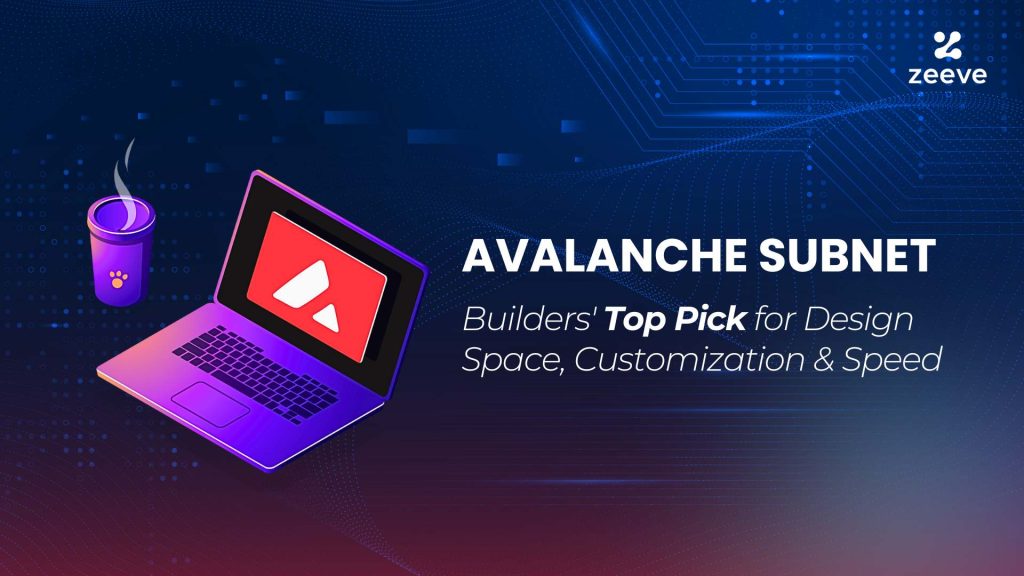Why Build on Avalanche Subnets: Key Factors for its Adoption
 Zeeve
Zeeve
Avalanche Subnets is a major breakthrough that enables web3 projects and enterprises in various niches to build independent, tailor-made blockchains. To date, over 110 subnets have been deployed on Avalanche with 1,727 validators powering them. Such a surpassing growth signifies the importance of the Avalanche subnets’ great features and capabilities, which we are going to discuss in this article. However, if you are still trying to figure out why choose Avalanche subnets, this article will also give a brief overview of subnets and the prominent Avalanche subnets use cases.
A brief run-through of Avalanche Subnets
Avalanche subnets or ‘subnetworks’ refer to a set of nodes (essentially validator nodes) that can reach consensus on multiple blockchains. You can think of Subnets as multiple networks operating on the top of a giant network. Using Subnets, Web3 builders can create custom, application-specific blockchains powering a single use case. These blockchains do not confront challenges such as traffic spikes, performance bottlenecks, and security issues. Want to dive deeper into Avalanche Subnets? Check out our detailed guide linked below: A Beginner’s Guide to Avalanche Subnets
Why is Avalanche Subnet a top pick for Web3 builders?
Avalanche Subnets has a lot of useful features that make it a top pick for Web3 builders. However, easy customization, modularity, and speed are the top reasons:
1. Customization options:
Builders on Avalanche Subnets have enormous flexibility in making their chain specific to the requirements. Following are the various options for it:
Tokenomics/fee structure- Each subnet can define its own gas fee that can be paid either in its native token or in AVAX. This means subnets can launch their native token or continue with AVAX.
Validator performance- Subnets can choose from a range of parameters for granting access to validators, ensuring optimal performance of their network. For example, validators that comply with standardized hardware/software requirements.
Public/permissioned Ecosystem- Based on specific requirements, subnets can choose to be open to selective nodes or be public to anyone (permissionless). Likewise, subnet creators can decide if their chain will be viewable to the public or just to some private organization of their interest.
2. Easy scalability:
Every Subnet in the Avalanche ecosystem is an independent entity with its own execution thread. Hence, it doesn't compete with other subnets to leverage network resources. This allows subnets to decrease the response time significantly, resulting in a higher number of TPS (transactions per second).
3. Interoperable design:
Avalanche subnets are designed to be interoperable. With Warp Messaging, subnets facilitate cross-subnet communication, thereby allowing Virtual Machines (VMs) developers to enable arbitrary interaction between different subnets. The interoperability element also allows validators to cross-validate on a subnet or set of subnets to achieve consensus. This means that dApp developers can build interoperable dApps using the Avalanche subnets.
4. Lowered gas fee:
Independent blockchains built as Avalanche subnets do not contend with high-traffic bottlenecks and performance. That’s because a single-use ecosystem relieves the burden of overall traffic and, therefore, lowers the gas/transaction cost, making the protocol economical for long-term sustainability.
5. Validators selection:
Validators in the subnet ecosystem are free to participate in blockchains that are relevant to their concern and interest. This prevents validators from being overburdened with the performance expectations imposed due to non-relevant subnets (or blockchains). This flexibility is equally useful for subnet projects as they only get validators relevant to their subnet niche. And, because Subnets choose validators on their own, it's important that they should provide nodes with fair incentives for their contribution. This can be distributed in several ways, such as paying in AVAX.

Top use cases and how they can use Avalanche Subnets
Now that we understand why web3 builders should chose Avalanche Subnets, let’s explore its top use cases and examples of projects below:
Decentralized finance (DeFi):
Avalanche Subnets are ideal for DeFi use cases like decentralized exchanges, asset management platforms, identity management, stablecoins, and insurance. Subnets can offer speed-matching centralized DeFi applications, great composability, high liquidity, and transparency while enabling the use of USDC as their gas tokens. DeFi applications can further benefit from the rich subnets ecosystem of interconnected blockchains and their specific services to unlock a wide range of innovative products and services, driving high adoption rates.
Example projects: MELD, Intain (Structured finance), Hubble exchange, Dexalot, etc.
Web3 Gaming:
Blockchain games require very high throughput to accommodate millions of daily active players. With Avalanche Subnet’s near-infinite scalability and flexibility in adjusting throughput, gaming projects can swiftly achieve extremely fast transaction speed and lower latency to provide a better player experience. And, whenever traffic spikes on the ecosystem, the TPS can be adjusted to accommodate required throughput. More information on Avalanche subnet gaming can be found here.
Example projects: DeFi Kingdoms, PLAYA3ULL Games, Shrapnel, MapleStory, BattleTech, Tiltyard Gives, Pegaxy, and more.
Real-world asset tokenization (RWA):
The Avalanche Subnet architecture, mainly the Evergreen Subnets, is designed to provide an ideal ecosystem for real-world asset tokenization where industry-specific customization and institutional needs can be catered to. With Subnets, tokenization use cases can achieve built-in and customizable features such as Ethereum compatibility, permissioning, easy smart contract deployment, and custom gas features. A good example is the tokenization of real estate properties where the property exists in the real world, but proof-of-ownership is stored across a subnet ecosystem. Example project: IntainMarkets subnet, REALLY Subnet.
Government sector operations:
Avalanche Subnets offer a high degree of security while maintaining fast transaction speeds and scalability. Plus, applications built on subnets are more efficient in computational and communication parameters. These features are useful for building complex government use cases, such as voting systems in elections, billing and metering for energy enterprises, and identity management processes.
Supply-chain management:
The transparency, security, and performance features of Avalanche Subnets allow for the development of innovative supply-chain solutions to ensure real-time data management and visibility of items that are entered, left in the retail store or in transit. This ensures that each step of the supply chain is verifiable and immutable, which eliminates product counterfeiting and theft while facilitating secure and efficient logistics management. Example projects-Avalanche Evergreen and Avalanche Vista.
Data Management in Healthcare:
Subnets are ideal for storing and managing healthcare records securely, which is crucial for data retention standards, including the Health Insurance Portability and Accountability Act (HIPAA). Additionally, Subnets make it easier for researchers to derive and share data related to clinical trials. Example project–Rymedi.
Launch & manage your Avalanche Subnets with Zeeve
Zeeve simplifies the development of Avalanche Subnets with a wide range of tools and the Zeeve platform itself. From rapid node & network setup to RPC configurations and validator node settings, Zeeve ensures that your subnet goes live with decreased heavy lifting and faster time-to-market. Additionally, Zeeve offers a powerful Avalanche subnet management dashboard that provides you with detailed insights and real-time view into all your active subnets and their vital aspects, such as node performance, validators, account & access control configuration, as well as system-level monitoring.
Besides Zeeve-managed services, there’s a strategic partnership with Benqi for liquid staking and lending, followed by 30+ third-party integrations that can be relevant for Avalanche Subnets creation. The cherry on top is you can view and manage your network from your Android and iOS devices on the go. For more information about Zeeve’s Avalanche Subnet-related services, contact us. Email us your queries or schedule a one-to-one call for a detailed discussion.
Subscribe to my newsletter
Read articles from Zeeve directly inside your inbox. Subscribe to the newsletter, and don't miss out.
Written by

Zeeve
Zeeve
Zeeve is an enterprise-grade low-code Blockchain Infrastructure-as-a-Service platform, compliant with ISO 27001, SOC2 Type II, and GDPR standards. We are the leading provider of Rollups-as-a-Service, dedicated node infrastructure, and hosted subgraphs. All the infrastructure managed by Zeeve includes 24x7 monitoring, Enterprise SLA, 99.9% uptime guarantee, and management dashboards to ensure a secure and scalable infrastructure. With support for all major Blockchains, 27,000+ platform users, and 40+ enterprise clients, Zeeve stands tall as the global go-to provider for Web3 infrastructure.
